The spine can only function properly when all of its regions (cervical, thoracic, and lumbar) are aligned properly and function in harmony. Conditions that disrupt the normal spinal alignment can lead to a curvature of the spine, either in the frontal plane or the lateral plane, and often both.
Scoliosis
Scoliosis refers to an abnormal curvature of the spine in the coronal (front) plane. Scoliosis has many possible causes. Idiopathic adolescent scoliosis typically affects girls in their early teen years, and involves a curvature of the spine as well as a rotation of the vertebrae. Degenerative scoliosis affects men and women later in life, and results from disc degeneration and other arthritic changes in the spine that cause the vertebrae to curve in an abnormal way. Treatment of scoliosis is complex and varies based on age, cause of the scoliosis and the severity of the curve. Options can range from bracing to complex spinal reconstructive surgery using a variety of approaches. As in every case, Dr. Saadat devises a custom plan for each patient to address their needs and goals in the safest way possible, with the least amount of surgery, and minimal recovery time.
Kyphosis
Kyphosis refers to a curvature of the spine in the sagittal (side) plane. Idiopathic (or Scheuermann’s) kyphosis usually is seen in adolescent boys, and involves wedging of the vertebrae, with a resultant increase in the forward curvature of the spine. Kyphosis can also be caused by fractures, or may develop as a consequence of prior spine surgery. The most important goal in surgical treatment of kyphosis is to achieve an upright posture where the head is well balanced over the pelvis. Options for treatment of kyphotic deformities include a posterior-only approach or a combined anterior and posterior approach. With advanced surgical techniques, most of cases can be treated in a less-invasive manner with successful outcomes.

